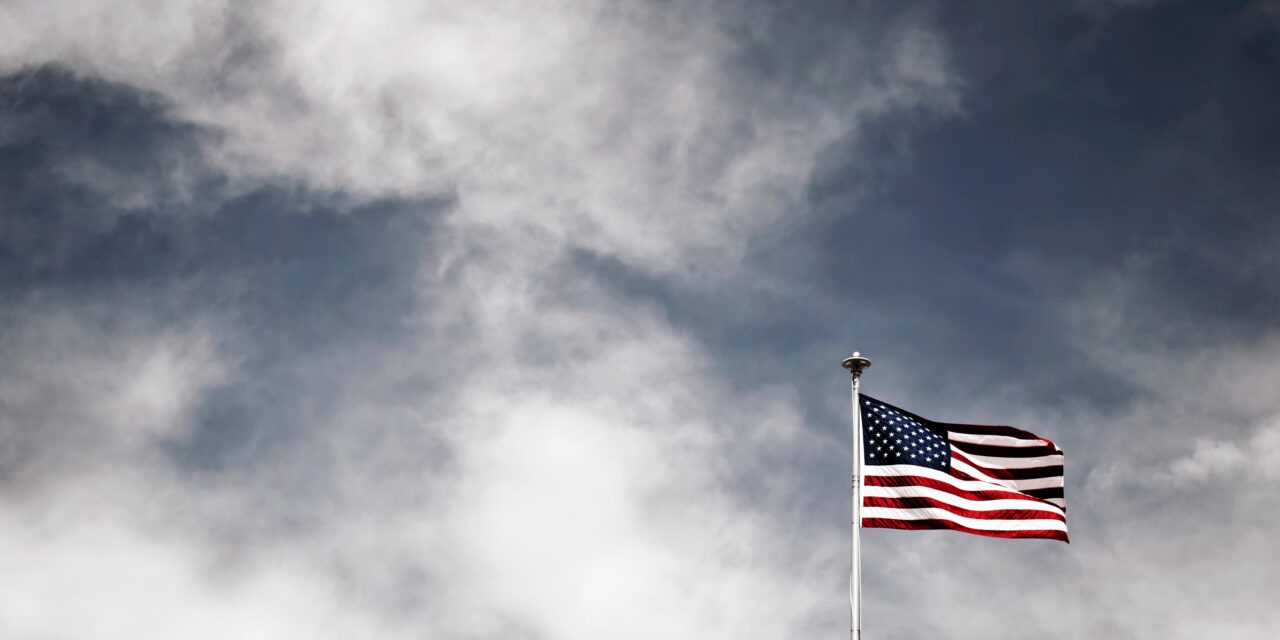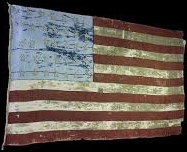BY Ski Ingram
Traditionally we only fly the flag during daylight hours and during good weather. The flag may be flown during darkness if there is a light shining on the flag. It may be flown in inclement weather, rain, snow, or during a wind storm if it is a nylon flag (all-weather flag).
When raising the flag, it should be hoisted briskly without pausing until it reaches the pole’s peak. When taking down the flag, it should be lowered ceremoniously showing respect, without pauses until it can be controlled by those lowering it.
When the flag is to be flown at half-staff the flag should be hoisted to its peak for a moment and then lowered to the half-staff position. At the end of the day it should be raised to its peak before lowering it. When the flag is being displayed on Memorial Day it should be flown at half-staff until noon and then raised to the top of the staff for the remainder of the day.
When the flag is being raised, lowered, or passing in review all persons should show it respect. Civilians should stand still with their right hand over their heart until the flag is raised to the top of the pole or when being lowered until those lowering the flag take control of it. Those in uniform should render the proper hand salute. Veterans not in uniform may also salute the flag. If the flag is passing in review everyone should show their respect until the flag passes them.
No flag should be flown above the American flag. The flag should always be in the position of greater prominence or honor. When flags are flown on two or more adjacent poles, the American flag should be flown higher than all other flags.
When used on a speaker’s platform the flag is to be displayed above and behind the speaker. When displayed on a pole, the flag should be placed in a position of prominence and to the speaker’s right as he faces the audience. All other flags should be placed to the speaker’s left.
When the flag is used to cover a casket, the blue field of stars (the union), should be at the head and over the left shoulder of the deceased. The flag should never be lowered into the grave or allowed to touch the ground.
The 50-star flag is the official flag, designated by President Dwight D. Eisenhower in 1959. However, any flag that lacks the full 50 stars may be displayed as long as it is in good condition. It should be treated with the same respect and rules as the official 50-star flag.
In general, your right to display the United States flag is protected by federal law via the Freedom to Display the American Flag Act of 2005. However, it is not an all-encompassing guarantee. The law specifies that a condominium association, a cooperative association, or residential real estate management association can establish “any reasonable restriction pertaining to the time, place, or manner of displaying the flag of the United States necessary to protect a substantial interest.”
I encourage everyone who loves America to fly our national emblem with pride every day and especially on all national and state holidays.
Ski Ingram is a member of Lester Keate Post 90 of the American Legion in St. George, Utah. He now lives in Gilbert Arizona. He is a combat veteran and a life member of four different veteran’s organizations as well as the NRA. He can be reached at Rangerski@cox.net






